25 F. average high on January 31.
41 F. high on January 31, 2016.
February 1, 1931: A 'heat wave' develops across southern Minnesota. St. Peter hits 60.
Winter Pulls Its Punch Into Much of February
"What good is the warmth of summer, without the cold of winter to give it sweetness" argued American author John Steinbeck. He had a point - but I'm too cold to care much.
Looking at NOAA heating degree day data we've spent 17 percent less than normal heating our homes and businesses so far this winter. January was the warmest since 2012; yesterday the 17th day in a row warmer than average.
Long-range models hint at a mild bias into February but it would be premature to daydream about spring. Both ECMWF and GFS models spin up a sloppy storm next Tuesday, followed by a subzero slap the end of next week; just a couple days of mildly acidic Yukon Air Freshener. 30s (above!) return by mid-February. No panic necessary.
In the short term we cool off into Thursday; a coating of slush on Saturday - but dry for Super Bowl Sunday parties.
Today's blog includes research suggesting you're more likely to catch the flu after a cold snap, a spike in hospital admissions for heart problems a couple days after heavy snowfalls, and a link between smog and dementia in older women. Who knew? Details below.
Tuesday Graupel. It sounds like a General Mills cereal experiment that never saw the light of day. In reality grapel, sometimes called "soft hail" or snow pellets, is precipitation that forms when supercooled droplets of water are collected and freeze on falling snowflakes, forming 2–5 mm (0.08–0.20 in) balls of rime. The term graupel comes from the German language. Maybe so, but I'm still hungry for a bowl of cereal.
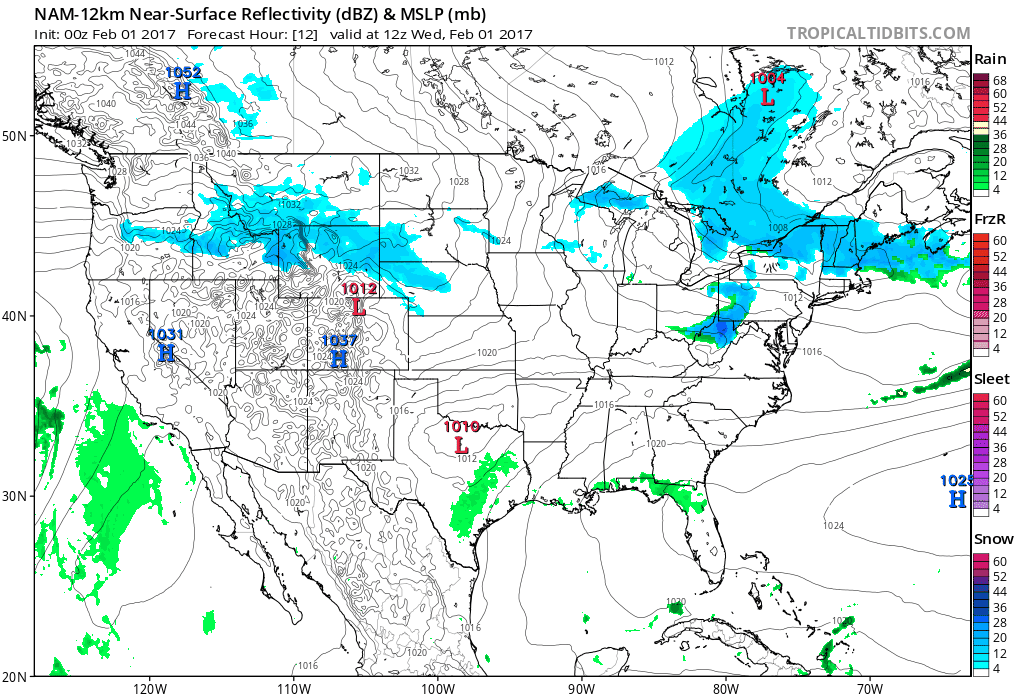
Shocker: Yet Another Storm for West Coast. Today looks fairly quiet, but NOAA's 12 KM NAM shows the next tentacle of Pacific moisture slithering ashore Thursday with locally heavy rainfall amounts - maybe another foot or two of snow? Some ski resorts have picked up 10-15 FEET of snow; what's another foot or two? Animation: Tropicaltidbits.com.
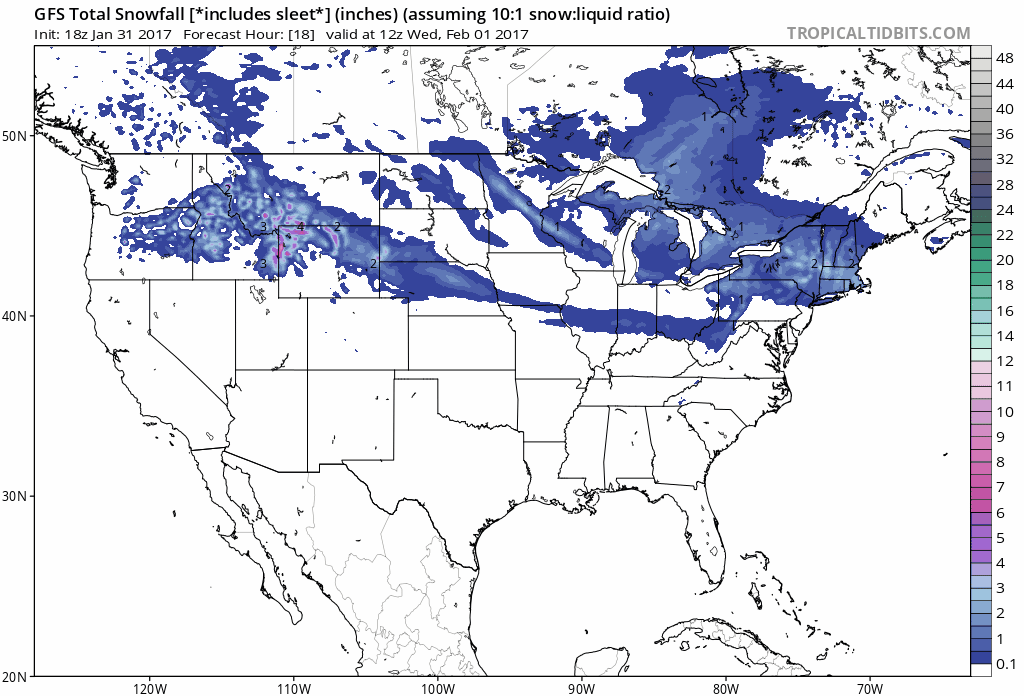
Significant Snow Next Week? I know - I'll believe it when I see it. With the exception of the Rockies and west coast mountain ranges most of America is in a perpetual snow drought. But the leading edge of arctic air may spin up a more formidable storm capable of tapping moisture from the Gulf of Mexico. NOAA's GFS brings (very) plowable amounts of snow across the Upper Midwest and Great Lakes by the middle of next week. Too early to get excited - we'll have to watch and see how this unfolds.
Next Storm Winding Up in the Pacific. Visible satellite imagery from GOES showed the impressive storm off the west coast - more heavy rain and mountain snow pushes into California, Oregon and Washington by Thursday.
Flowers Already In Bloom. Plants, flowers and trees are in bloom close to the Gulf Coast, a good 15-20 days ahead of schedule.
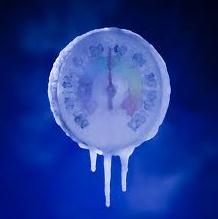
You're More Likely To Catch Flu After a Cold Snap, Study Says. Because we're indoors around other (sick) people - or bitter air is a shock to our immune systems? CNN.com has the story: "Cases
of flu are on the rise, according to a recent statement from the United
States Centers for Disease Control and Prevention, and experts are
warning that this year's flu season
will be worse than last. Now, a new study published in the Journal of
Clinical Virology is shedding some light on exactly how cold weather and
the spread of viruses are linked. It turns out, seasonal flu outbreaks
first appear each year about a week after the winter's first cold spell
-- or at least that's what happened in Sweden, over the course of three
years when researchers tracked weather patterns and the prevalence of
the virus..."

Snowstorms May Bring Blizzard of Heart Troubles. Who knew? The result of stress from shoveling? Rougher commutes? Cold air behind the storm triggering asthmatic events? Drug.com's MedNews has the story: "Snowstorms may leave more than a big mess in their wake: New research shows a sharp spike in hospital admissions for heart trouble two days after these weather events. Hospital admissions for heart attacks, chest pain and stroke actually fell on the day of the storm, the study found, possibly because people can't get out for care. But they rebounded again within the next 48 hours. The reasons for the trends aren't clear, the researchers said..."
Air Pollution Increases Risk of Dementia Among Older Women, New Study Finds. Yale E360 has the story: "Older women who live in places with high air pollution levels are 92 percent more likely to develop dementia, including Alzheimer’s, according to a new study by scientists at the University of Southern California. The risk is heightened even more in women with the APOE4 gene, a genetic variation associated with an increased chance of developing Alzheimer’s. It is the latest in a growing number of studies linking air pollution with dementia..."
Photo credit: "Smog over downtown Los Angeles, which is among the top five worst U.S. cities for air pollution." Steven Buss/Flickr.
How To Stop The U.S. Flood Insurance Program From Drowning in Debt. Expect this problem to worsen over time, as the frequency and magnitude of flooding events continues to increase. Here's an excerpt of an Op-Ed at TheHill: "This month, the Federal Emergency Management Agency (FEMA) announced that its National Flood Insurance Program (NFIP) had to borrow another $1.6 billion from the Treasury to break even on its 2016 losses. Add that to the existing debt, largely due to hurricanes Katrina and Rita and Superstorm Sandy, and the NFIP currently is almost $25 billion in debt. The NFIP is up for reauthorization later this year, and Rep. Jeb Hensarling (R-Texas), who chairs the House Financial Services Committee, has already said that reforming the program will be a “major focus” for his committee this year..."
File photo credit: U.S. Coast Guard Aircrews.
Storms Preview Sea-Rise Damage to California Roads, Cities. The Washington Post reports: " Ocean rise already is worsening the floods and high tides sweeping California this stormy winter, climate experts say, and this month’s damage and deaths highlight that even a state known as a global leader in fighting climate change has yet to tackle some of the hardest work of dealing with it. The critical steps yet to come include starting to decide which low-lying cities, airports and highways, along with threatened landmarks like San Francisco’s Embarcadero, to hoist above the rising water and which to abandon — and where to start getting the many billions of dollars for those climate rescues. “People always tell us we’re ahead of the curve” on climate change, said Larry Goldzband, head of a regional San Francisco Bay commission that late last year stepped up regional efforts to identify and prioritize communities and infrastructure at risk from rising sea level. As proud as Californians are of their climate-change efforts, “I always think, ‘Man, if we are ahead of the curve, I feel sorry for the rest of the country,’” Goldzband said..."
Photo credit: "This Jan. 14, 2017 photo provided by Fraser Shilling shows flooding along Highway 37 near Vallejo, Calif. Ocean rise already is worsening the floods and high tides sweeping California this stormy winter, climate experts say, and this month’s damage and deaths highlight that even a state known as a global leader in fighting climate change has yet to tackle some of the hardest work of dealing with it." (Fraser Shilling via AP) (Associated Press)
Extreme Weather is Becoming More Frequent - and Expensive - in Europe. Here's an excerpt from Pacific Standard: " ...This week, the European Environment Agency released its latest report,
which clearly spells out the threat of rising sea levels and more
extreme weather, such as more frequent and more intense heatwaves,
flooding, droughts, and storms due to climate change. The report — updated every four years — says more flexible adaptation strategies are crucial to mitigating these effects. Climate-related
extreme events in EEA member countries have accounted for more than 400
billion euros in economic losses since 1980, according to the report.
One of the important new findings in the report is that there was no
global warming pause between 1998 and 2012, as had been suggested by
some temperature record evaluations later shown to be flawed...."
Photo credit: "A high tide combined with a storm surge floods the Menai Straits." Credit: Adrian Kingsley-Hughes/flickr
A Look at the Northwest Earthquake That Shook the World. The Pacific Northwest is just as vulnerable to earthquakes as California. Here's an excerpt from Seattlepi.com: "...An
earthquake that shocked the whole coastline would’ve been massive,
somewhere around 9.2 magnitude, and would’ve had to rupture the entire
length of the 600 mile-long fault on the Cascadia subduction zone. But
for years, scientists couldn’t narrow down exactly when it happened. By
comparing historical records in Japan, oral histories of Native
Americans and a complex computer simulation, researchers confidently
pinpointed the earthquake to around 9 p.m. on Jan. 26, 1700. A quake of
this magnitude could have gone on for five minutes or longer and
would’ve generated a wave that would have resulted in a tsunami reaching
Japan in about nine hours..." (Image credit above: EARTH Magazine).
Photo credit: " REUTERS/National Park Service. "A
general view of the Yosemite Falls flowing in Yosemite National Park in
this December 3, 2014 picture provided by the National Park Service."
Tesla Gives the California Power Grid a Battery Boost. Here's a clip from The New York Times: "Just off a freeway in Southern California, 396 refrigerator-size stacks of Tesla batteries, encased in white metal, have been hastily erected with a new mission: to suck up electricity from the grid during the day and feed it back into the system as needed, especially in the evening. The installation, capable of powering roughly 15,000 homes over four hours, is part of an emergency response to projected energy shortages stemming from a huge leak at a natural gas storage facility. The project, which officially comes online on Monday, is an important and surprising demonstration of how utilities can use enormous collections of batteries in place of conventional power plants..."
Photo credit: "Tesla battery packs at Southern California Edison’s Mira Loma substation." Credit Tesla.
Image credit: "Watt a good idea." Laurent T
Photo credit: "Warren Buffett, chairman and CEO of Berkshire Hathaway, speaks while Bill Gates looks on at Columbia University in New York, U.S., January 27, 2017." REUTERS/Shannon Stapleton.
Illustration credit: "We talked to industry insiders and tracked the trends to identify the tech that will make the biggest impact in 2017." Illustration: Jason Schneider.
Photo credit: "Bill Parcells gets a Gatorade shower after a victory." AP.
The Mystery and Occasional Poetry of...Um...Filled Pauses. Here's the intro to an illuminating explainer at Atlas Obscura: "Nearly
every language and every culture has what are called “filled pauses,” a
notoriously difficult-to-define concept that generally refers to sounds
or words that a speaker uses when, well, not exactly speaking. In
American English, the most common are “uh” and “um.” Until about 20
years ago, few linguists paid filled pauses much attention. They were
seen as not very interesting, a mere expulsion of sound to take up space
while the speaker figures out what to say next. (In Russian, filled
pauses are called “parasite sounds,” which is kind of rude.) But since
then, interest in filled pauses has exploded. There are conferences
about them. Researchers around the globe, in dozens of different
languages, dedicate themselves to studying them. And yet they still
remain poorly understood, especially as new forms of discourse begin
popping up..."
Photo credit: "Tokyo at night." Zengame/CC BY 2.0
Huh? Sorry - not feeling this one...
TODAY: Partly sunny, brisk. Winds: NW 10-15. High: 21
WEDNESDAY NIGHT: Partly cloudy and chilly. Low: 9
THURSDAY: Blue sky, still cooler than average. Winds: NW 10-15. High: near 20
FRIDAY: Partly sunny, less wind. Winds: W 7-12. Wake-up: 7. High: 23
SATURDAY: Coating of wet snow possible. Winds: S 10-15. Wake-up: 15. High: 29
SUNDAY: Drying out, better travel day. Winds: NW 5-10. Wake-up: 24. High: 35
MONDAY: Hints of March, still mild. Winds: E 5-10. Wake-up: 27. High: near 40
TUESDAY: Mix changes over to snow, heavy late? Falling temperatures. Winds: NE 15-25. Wake-up: 33. High: 36
Climate Stories...
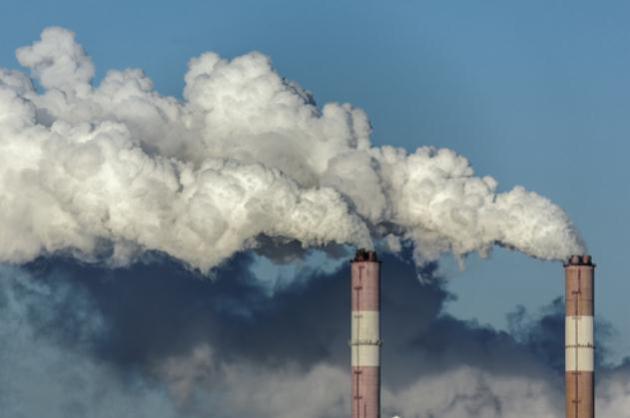
U.S. Will Change Course on Climate Policy, Says Former EPA Transition Head. Here's an excerpt from Reuters and Yahoo News: "The
United States will switch course on climate change and pull out of a
global pact to cut emissions, said Myron Ebell, who headed U.S.
President Donald Trump's Environmental Protection Agency (EPA)
transition team until his inauguration. Ebell is the director of global
warming and international environmental policy at the Competitive
Enterprise Institute, a U.S. conservative think tank, and helped to
guide the EPA's transition after Trump was elected in November until he
was sworn in on Jan. 20. Trump, a climate skeptic, campaigned on a
pledge to boost the U.S. oil and gas drilling and coal mining industries
by reducing regulation. He alarmed nations that backed the 2015 Paris
agreement to cut greenhouse gases by pledging to pull the United States
out of the global deal agreed by nearly 200 countries. However, Trump
told the New York Times in November that he had an "open mind" on the
agreement..."
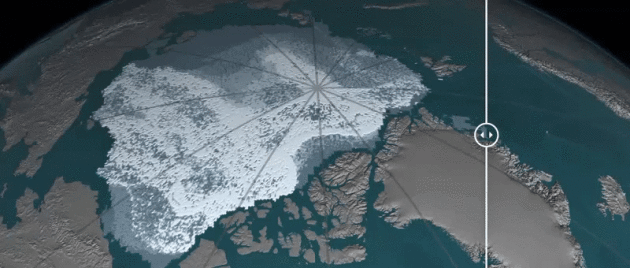
Images of Change. NASA has an interactive web site
that shows the dramatic decrease in ice coverage from September 1984 to
September 2016. It turns out it's not only aerial coverage of ice, but
ice thickness as well. In the 1950s submarines in the U.S. Navy reported
ice 6-10 feet thick; now it's only a couple feet thick in many
locations.

Photo credit: "The 7-mile-wide crater left on top of Mount Tambora in Indonesia after its volcanic eruption in 1815." (Iwan Setiyawan/AP Photo/KOMPAS)
Wisconsin Leads on Climate Research, Even As Agencies Cut Science from Websites. Here's an excerpt from Midwest Energy News: "...With an
economy heavily dependent on agriculture, outdoors tourism and
forestry, climate change could have a range of severe impacts, as WICCI has documented. The
trout fisheries that bring anglers from around the country could be
seriously affected by warming waters and changing stream flows.
Increased heavy rains could cause soil erosion devastating to farms and
dairies. Warmer weather could affect wildlife and the spread of
tick-born Lyme disease, a serious problem in a state famed for hunting
and camping. Groundwater crucial for
agriculture and streams in the Central Sands area could be reduced, and
political tension between different groundwater-using interests could
grow. Increasing heavy storms could wreak havoc on towns and fishing
operators on the coast of Lake Michigan..."
Wisconsin DNR Blatantly Ignores Climate Change Science. Here's an excerpt of an Op-Ed at USA TODAY: "...Currently,
a few federal, and more state and municipal governments, as well as a
great many businesses in the private sector are planning strategies for
dealing with the impacts of climate change. Those impacts — which
include rising sea levels, increased prolonged periods of excessively
high temperatures, more wildfires, more severe droughts, more severe
storms, permafrost thawing, and ocean acidification — are already
significantly affecting our communities, ecosystems, economies and
public health in negative ways. We should be outraged when an agency
that works for and is paid for by the people of Wisconsin blatantly
chooses to ignore information that clearly establishes human activity as
the primary cause of climate change, a fact that must be addressed if
our children and grandchildren are to have an environment that is even
close to that which we have enjoyed. We expect our doctors to use the
very best in scientific knowledge to help us when we get sick — not just
in treating our symptoms, but in addressing the underlying causes..."
No comments:
Post a Comment